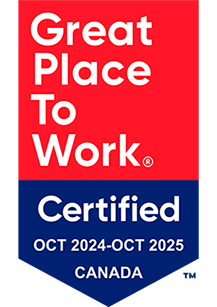Polyurethane compounds are safe to use provided that all the manufacturer's recommendations are observed. The following safety recommendations are aimed at manufacturing operations utilizing urethane resins and hardeners (curatives).
The following is a check list of important safety items that should be reviewed when using these compounds:
1. Read the MSDS for the resin and curative (hardener)
This document contains the safety precautions that are specific to the formulation of each component.
2. Storage
Generally speaking Polyurethanes are moisture sensitive. Most formulators manufacture both resins and hardeners under vacuum and purge each container with Nitrogen before shipping the products. The Nitrogen blanket, being heavier than air, remains on top of the liquid in the container and provides a moisture barrier. Containers should be stored with closed lids and part containers should be purged with Nitrogen before being committed to storage.
3. Handling
Polyurethane products, like any other chemicals, must be treated with caution and using common sense at all times. This includes the following:
-
-
-
Wear gloves to avoid skin contact
Certain types of urethanes will actually stain the skin if contact occurs. Being moisture sensitive, these products will react with the moisture in the skin and the stain will be hard to remove. -
Do not breathe vapours
Urethanes are moisture sensitive. They will react with moisture in the lungs. Provide adequate ventilation in the work area, especially if any of the components being used require heating. -
Skin contact
If skin contact occurs, follow the recommendations on the MSDS since, depending on the formulation, the recommended cleaning procedures may be different. If the recommended cleaning procedure is not readily available and an accidental exposure occurs, do not use solvents, use a waterless hand cleaner cream first and was thoroughly with soap and water after.
-
-
4. Ventilation
Do not use any chemicals, including polyurethanes in enclosed areas without ventilation. The ventilation should be such that the fumes are drawn away from the operator. Air should not be drawn across the face of the operator but rather away from the face to eliminate breathing any fumes that may be present. This is very important when using products that are heated for processing. Make certain that the ventilation system provides positive air flow.
Although it is not a frequent occurrence, some products require "personal breathing apparatus" to be worn during use. Check with the supplier for specific recommendations.
5. Use a mask
A good organic or fresh air mask is suitable but, since there are a variety of products on the market, it is best to check with a safety supply house for a recommendation.
6. Protective clothing
Do not wear clothing that stains easily. Remove any stained clothing to eliminate continued skin contact. Wear gloves and aprons made from non-porous, synthetic, chemical resistant materials.
7. Work area
Keep the work area clean and uncluttered. This will prevent accidental spills. Keep tools clean. It is best to clean tools shortly after use, before the residual material has a chance to react with the moisture in the air.
8. Tools
It is best to use stainless steel tools and containers if possible. Wooden stir sticks contain moisture that can react with the urethane as well as soaking up the material increasing the chance for skin contact.
Wooden stir sticks are suitable if first sealed with an epoxy.
9. Machining the cured product
Although solidified (cured) epoxy and urethane products are inert and relatively harmless, traces of residual components may be left on the surface. The finished parts may have to be machined to remove flash or to trim the component to the proper size. Machining or sanding finished parts will inevitably generate dust that should not be inhaled. Provide ventilation, wear a suitable mask, gloves and cover exposed skin to prevent contact with the dust.
10. Safety supplies
There are a large number of safety supply businesses in Canada and the USA. It is best to make inquiries to find the best products to use based on the urethane under consideration.
The above are common sense precautions that should be followed not just with Urethane compounds but with all chemical products. The focus should be to prevent any chemical from entering the body either through inhalation or through the skin.
Remember that "any chemical that is considered safe today may be declared dangerous tomorrow".



